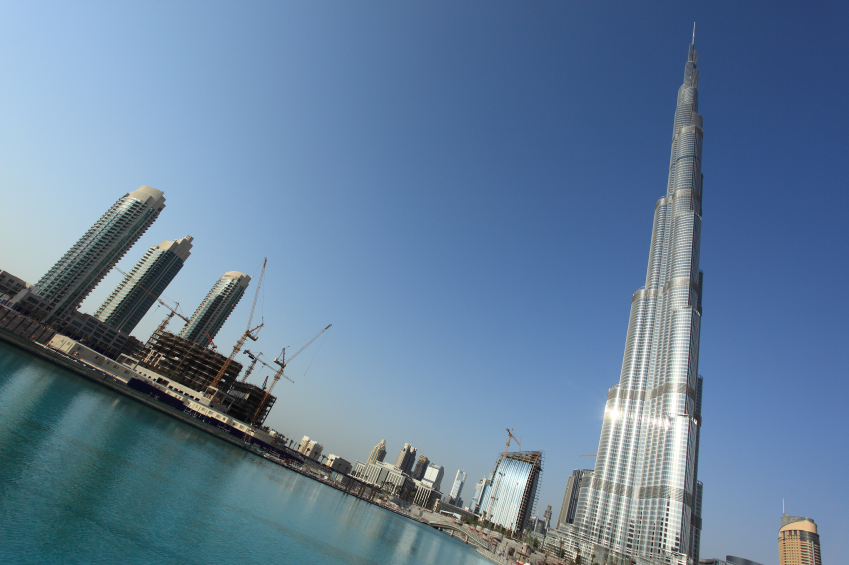Burj Khalifa Tower
-
Durability Assessment & Service-Life Evaluation
- Location: Dubai, United Arab Emirates
The soaring skyscraper Burj Khalifa Tower in Dubai shatters records for the tallest building in the world. Rising at 828 meters (2,717 feet), the Tower represents an engineering embodiment of the world’s highest aspirations. It is a significant achievement with regards to the latest design, material composition as well as construction technologies and methods used to build a structure that would rise to heights never before seen.
The 280,000 m2 (3,000,000 ft2) reinforced concrete multi-use Burj Khalifa tower that was designed for retail, a Giorgio Armani Hotel, residential housing and business.
As with any project of this magnitude, challenging engineering problems needed to be addressed and resolved to ensure the longevity and safety of this unique structure.
The tremendous height of this skyscraper raised multiple safety concerns and had to be designed to withstand extreme environmental conditions as well as possible fires or explosions.
Skidmore, Owings & Merrill LLP, the architectural firm responsible for designing the Burj Khalifa Tower, called-in SIMCO to assess the concrete durability designs of the Tower in order to ensure a 100-year service life (that would not require major structural repairs in time, but include nominal repairs and regularly scheduled maintenance).
SIMCO reviewed the concrete design specifications and plans in order to provide recommendations for the durability of concrete mixtures used for the foundation piles, tower piles and raft, podium piles, hydrostatic slab and retaining walls in addition to reviewing the cathodic protection design for these same structural elements.
Client Objectives
- Concrete durability design complying to 100-year service-life specifications
- Design reinforced concrete structures to make it stronger than steel-frame skyscrapers
- Reinforced concrete core walls to provide torsional resistance
- Reinforced concrete structure designed in accordance with ACI 318-02 Building Code Requirements for Structural Concrete
SIMCO’s Solution
- Review and analyze durability design specifications
- Analyze exposure conditions data in order to generate possible deterioration scenarios
- Review local material properties to evaluate service-life expectation based on the exposure conditions and on concrete transport properties
- Predict the degradation of unsaturated concrete structures exposed to chemically aggressive environments
- Provide recommendations for optimal durability to attain a 100-year service life
Results
- Reliable assessment of concrete performance
- High-precision data for the implementation of effective quality control measures
- Insight to different alternatives that would not have been possible without access to prediction information
- A reinforce and more durable concrete structure designed for a 100-year service life

